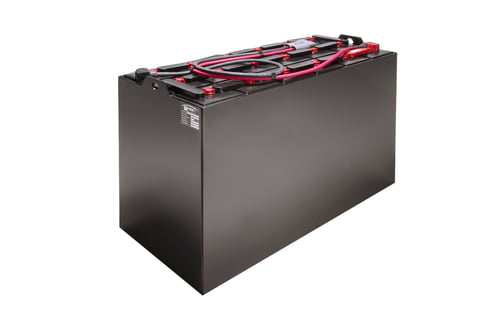Maximize Forklift Batteries Efficiency Today
Introduction
In today’s fast-paced industrial landscape, optimizing operational efficiency is paramount. One critical 80 volt flat plate forklift batteries component that often gets overlooked in warehouse and manufacturing settings is the forklift battery. These batteries are the unsung heroes of material handling, powering forklifts that move goods and materials from point A to B. Yet, many organizations fail to maximize the efficiency of their forklift batteries, leading to increased costs and reduced productivity.
So, how do you ensure that your forklift batteries operate at peak performance? In this article, we'll explore effective strategies and best practices to maximize forklift batteries efficiency today. By implementing these tips, you can not only extend the life of your batteries but also enhance overall operational productivity.
Understand Your Forklift Batteries
Types of Forklift Batteries
Forklift batteries come in various types, each suitable for different applications. Understanding these can help you choose the right one for your specific needs:
- These are the most common type found in forklifts. They’re relatively inexpensive and provide a steady energy output.
- Pros: Cost-effective and widely available.
- Cons: Requires regular maintenance and has a shorter lifespan compared to other types.
- Gaining popularity due to their longer life span and faster charging times.
- Pros: More efficient with fewer maintenance requirements.
- Cons: Higher upfront cost.
- Known for their durability and ability to perform well in extreme temperatures.
- Pros: Great for heavy-duty applications.
- Cons: Environmental concerns due to cadmium toxicity.
By understanding the characteristics of each battery type, you can make an informed decision about which one will suit your operational needs best.
Battery Specifications Matter
When diving deeper into the world of forklift batteries, pay attention to specifications such as capacity (measured in amp-hours), discharge rates, and recharge times. These elements dictate how efficiently a battery can perform under load conditions.
- Capacity: This indicates how much energy a battery can store. A higher capacity generally means longer operation times between charges.
- Discharge Rates: This refers to how quickly a battery can deliver its stored energy. Understanding this helps in selecting batteries that match your workload demands.
- Recharge Times: Fast recharging capabilities allow for more extended usage throughout shifts without downtime.
Assessing these factors will guide you in choosing the right battery for your specific operational context.
Maximize Forklift Batteries Efficiency Today
Implement Proper Charging Practices
Charging practices play an essential role in maximizing forklift battery efficiency. Here are some best practices:
- Try not to let your lead-acid batteries drop below 20% state-of-charge before recharging them. Shallow discharges prolong battery life.
- Smart chargers automatically adjust charging parameters based on the battery's condition, leading to optimal charging cycles.
- Ensure that charging occurs at appropriate temperatures; extremely hot or cold conditions can damage batteries or prevent them from charging efficiently.
- For lead-acid types, periodic equalization charging can help balance cell voltages and minimize sulfation buildup.
By adopting these practices, you'll see significant improvements in your forklift battery performance.
Maintenance Tips That Make a Difference
Regular maintenance is crucial for keeping your forklift batteries running efficiently:
-
Check Water Levels Regularly (for Lead-Acid Batteries):
-
Ensure that water levels are adequate according to manufacturer specifications; low water levels can cause irreversible damage.
-
Clean Battery Terminals and Connections:
-
Dirt or corrosion on terminals can create resistance and affect performance; cleaning them regularly helps maintain optimal conductivity.
-
Inspect Cables for Wear & Tear:
-
Damaged cables can hinder energy transfer; replace worn cables promptly for optimal performance.
-
Monitor Battery Temperature During Use:
-
Overheating can indicate problems with either the battery or charger; take immediate action if overheating occurs.
With proper maintenance routines in place, you'll extend both the life span of your forklift batteries and their efficiency during operations.
FAQs
1. How often should I charge my forklift batteries?
It's ideal to charge fork lift batteries after every shift or when they reach around 20% capacity remaining.
2. Can I use any charger with my forklift battery?
No! Always use chargers compatible with your specific type of forklift battery (lead-acid or lithium-ion) to ensure safety and efficiency.

3. How long do lead-acid forklift batteries typically last?
With proper care and maintenance, lead-acid forklift batteries usually last around 5 years on average but may vary depending on usage patterns.
4. What signs indicate my forklift battery needs replacing?
Signs include drastically reduced run time on charges, excessive heat during operation or charging, swelling cases, or leaking fluids.
5. Is it safe to charge lithium-ion batteries overnight?
Yes! Lithium-ion batteries have built-in management systems allowing safe overnight charging without risk of overcharging.
6. Can I mix different types of forklift batteries?
No! Mixing different types of batteries (e.g., lead-acid with lithium-ion) is dangerous as they require different voltage levels and charging methods.
Conclusion
Maximizing forklift battery efficiency is not just about choosing the right type 36 volt flat plate forklift batteries but also involves diligent maintenance practices and smart operational strategies. By implementing proper charging habits, performing routine check-ups on battery health, and understanding the specifications of your equipment, you set yourself up for success in managing forklifts effectively while ensuring longevity from those essential power sources—your forklift batteries!
Now that you're armed with knowledge about how to maximize forklift batteries efficiency today, why not take action? Start by evaluating your current practices against our recommendations and see where improvements can be made!
By following these guidelines closely—as well as staying informed about technological advancements—you’ll ensure that your operations run smoothly while keeping costs down!